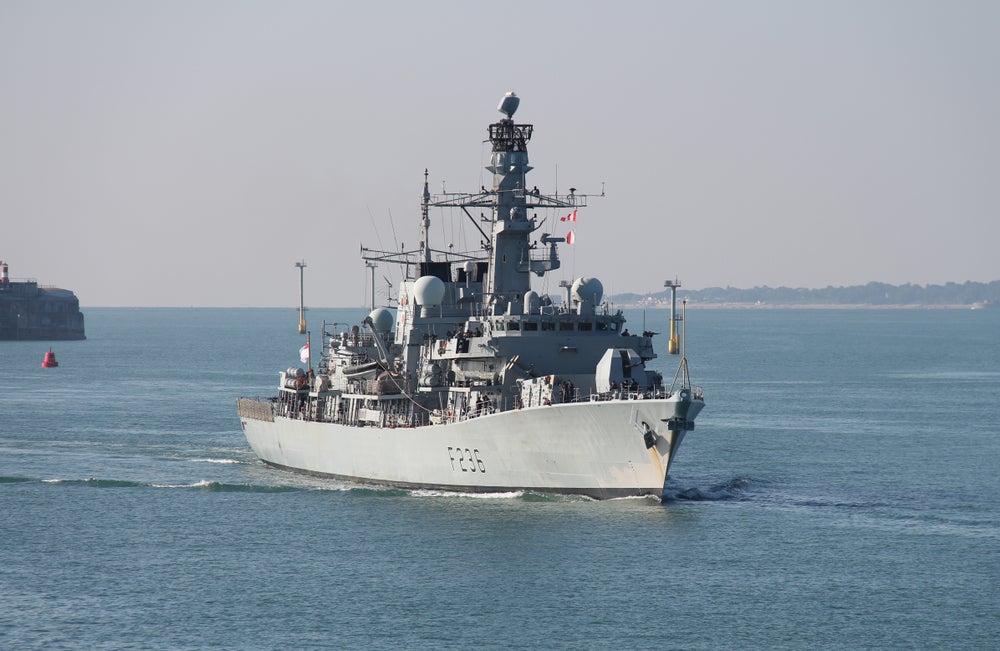
UK MoD Sees Strong Interest in HMS Scott and Type 23 Frigates
The UK Defence Equipment Sales Authority (DESA) brochure was updated on 2 March to include the HMS Scott and the Type 23 Duke-class frigate. The Royal Navy will seek to sell all Type 23 vessels, as it upgrades its fleet to the Type 26.
Speculation on social media had suggested that Turkey is interested in purchasing the Type 23, but a Royal Navy spokesperson dismissed these claims as based solely on conjecture, stating that potential buyers are a commercially sensitive subject, and the Ministry of Defence would not disclose any details of potential nations in discussion for purchasing the ships.
The spokesperson added that there has been a lot of interest in purchasing both HMS Scott and the vessels from the Type 23 frigate class.
The Type 23 Frigate
The Type 23 frigate forms the core of the front-line fleet, and served as a submarine hunter until the addition of the vertical-launched Seawolf point missile defence system and the Boeing Harpoon surface-to-surface missile expanded its role to include anti-surface warfare, with the versatility to take on a complete variety of mission tasks.
A total of 16 Type 23 vessels were built with the first commissioned in 1990.
The UK Ministry of Defence (MoD) announced that the Type 23 fleet was to be reduced to 13 in July 2004. Batch 1 vessels, HMS Norfolk and Marlborough, were decommissioned in 2005 and Grafton in March 2006. All three were sold to the Chilean Navy and delivered over 2007-2008.
Eight Type 26 frigates will replace the remaining dedicated anti-submarine frigates, while the new Type 31 Inspiration class will step in to serve as a general-purpose light frigate.
HMS Scott
HMS Scott, the only vessel of its class, is the largest vessel in the Hydrographic Squadron, with the primary task of surveying the ocean depths, collecting bathymetric data and for providing the UK Hydrographic Office (UKHO) with submarine navigation information.
In the wake of the attack on the Nord Stream pipeline new focus has been given to operations on the ocean’s seabeds, with seabed warfare coming into focus as an area of attention necessary for protecting critical infrastructure.
The vessel was built by Appledore Shipbuilders in North Devon. It was ordered in 1995 to replace HMS Hecla (A133), and was launched in October 1996, entering service in June 1997.
“The suspected sabotage of the Nord Stream pipelines in late September has brought these vulnerabilities in sharp focus.”
James Marques, associate aerospace, defence and security analyst, GlobalData
In February 2005, Scott was deployed to survey the Indian Ocean seabed around the origin point of 2004 earthquake. The survey was conducted in depths of 1,000m to 5,000m by using a high-resolution and multi-beam sonar system.
The survey vessel underwent a ten-month refit and sea trials in 2009. In October 2009, it was deployed in the Antarctic and South Atlantic to replace the Royal Navy’s Antarctic ice patrol ship HMS Endurance.
The ship is able to be at sea for 300 days in a year.
In November the UK MoD said it was prioritising the procurement of two Multi-Role Ocean Surveillance (MROS) ships. “The suspected sabotage of the Nord Stream pipelines in late September has brought these vulnerabilities in sharp focus,” said James Marques, associate aerospace, defence and security analyst at GlobalData, “prompting the MoD to speed up delivery of the MROS capability.”








